Revered actor of stage and screen, Patti LuPone has done many things in her career. She’s asked Argentina not to cry for her in Evita, dreamed a dream in Les Misérables, and baked meat pies in Sweeney Todd. Now, for the first time in her career, LuPone is taking on her latest, most challenging role as The Apologizer on Instagram.
Per Vulture, LuPone took to Instagram yesterday to offer a heartfelt apology post to the Broadway community, after an open letter from 500 artists asked her to stop bullying her fellow performers in response to a very LuPonian New Yorker interview and, also, a career of being Patti LuPone. In the interview, LuPone calls Broadway star Audra McDonald “not a friend” and Kecia Lewis a “bitch.” The letter also accuses her of “degrading and misogynistic” behavior that amounts to “a blatant act of racialized disrespect” and “bullying.” The Tony winner now regrets doing so.
“I am deeply sorry for the words I used during The New Yorker interview, particularly about Kecia Lewis, which were demeaning and disrespectful,” LuPone wrote. “I regret my flippant and emotional responses during this interview, which were inappropriate, and I am devastated that my behavior has offended others and has run counter to what we hold dear in this community. I hope to have the chance to speak to Audra and Kecia personally to offer my sincere apologies.”
LuPone also “wholeheartedly” agrees with “everything” in the open letter to her, stating that “theatre has always been about lifting each other up and welcoming those who feel they don’t belong.” After some 40 years of not living up to those beliefs, LuPone now says she “made a mistake” and takes “full responsibility for it.”
Meanwhile, appearing on CBS Sunday Morning last week, McDonald seemed confused about why LuPone took a swipe at her in the first place, saying she hadn’t seen her in over a decade. “I don’t know what the rift she’s talking about,” she said. “You’d have to ask her”.
But it’s really on LuPone to step up. She can’t simply hit the marks as The Apologizer; she must also star as The Accountability Taker. The call-out letter asks the American Theatre Wing and the Broadway League to bar LuPone from the June 8 Tony Awards unless she actually makes some changes, an essential part of every apology. “Participation, recognition, and attendance at high-profile events must be contingent on conduct that reflects community values,” the letter states. “This includes completion of comprehensive anti-bias or restorative justice programs before re-entry into public-facing spaces.”
The post Patti LuPone stuns Broadway as The Apologizer appeared first on AV Club.
In the aftermath of its multiple-award-winning six-season run on AMC, it’s easy to forget that Better Call Saul, much like its central character, had its work cut out for it when it premiered in 2015. The series, a spinoff of Breaking Bad, had a lot to live up to, and co-creators Vince Gilligan and Peter Gould were starting from scratch with a character whose backstory Gilligan had purposefully obscured in the original show. Rolling Stone’s chief TV critic Alan Sepinwall was there from the beginning, recapping every episode of the series and providing critical insight into the show. In his new book, Saul Goodman V. Jimmy McGill: The Complete Critical Companion To Better Call Saul (out February 4 via Abrams Press), Sepinwall collects those recaps—along with various interviews he conducted over the years with Gilligan, Gould, and more—in one place for the first time. Sepinwall also revisits Better Call Saul through new interviews with Gould, diving deep into how the writers got to the heart of Saul Goodman by giving Jimmy McGill time to grow.
In this exclusive excerpt, Sepinwall and Gould talk about the surprising influence of Midnight Run, the 1988 buddy action comedy starring Robert DeNiro and Charles Grodin, on Better Call Saul, and why it took longer than they initially anticipated for Jimmy McGill to become Saul Goodman.
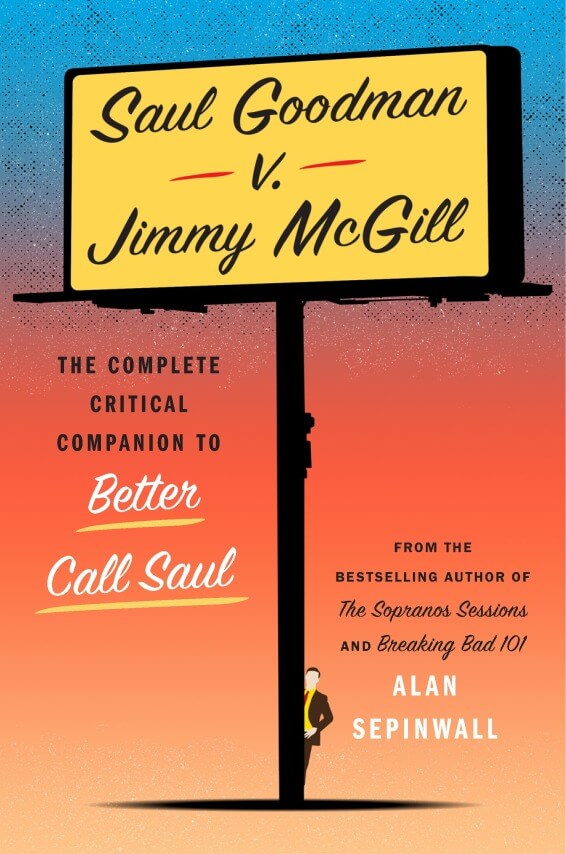
Abrams Press
When Vince and I spoke about the development process, he admitted that, after a little while, he really started banging his head against the wall and wondering why he ever thought this was a good idea for a TV show. Did you have any of these similar moments of self-doubt?
Oh, absolutely. Because the show had no obvious motor, at least when you start out. He’s a lawyer, and he wants money, and he’s got a sleazy side. And, where’s the story? His goal was a little bit ephemeral to us at first. It was really hard to figure out. It was like doing the Rubik’s Cube from hell because we had all the things that we’d established on Breaking Bad, and also, are people going to take to this character? In the moment, it always seems impossible. And, the other thing is, people loved Breaking Bad so much that it was like, “How is this ever going to be in the running?”
[On our Zoom, Gould notices that I have a poster of the 1988 Robert De Niro/Charles Grodin buddy action comedy Midnight Run hanging on the wall behind me.]
Your poster reminded me of something, because literally Vince and I were sitting down and we were going to have a conference call with the studio and the network. And one of the things we asked ourselves, “Who from Breaking Bad could we have back?” And, I think we both felt like, “Oh, well, wait a minute, [Jonathan] Banks.” And there were a bunch of reasons for that. One of which was, you have a laconic character and a talkative character, and that just seems to work as a pair. But the other thing is, your poster over your shoulder is Midnight Run, which is one of my all-time favorite movies, and I just felt like, that’s how these two archetypes could get together. And I think I pitched probably just to Vince at the time, “What if these two guys get stuck in the desert and they’re handcuffed to each other?” And, that image for some reason really spoke to me, and I think spoke to all of us, and it just took us, whatever it was, forty, fifty episodes to get to it.
Saul on Breaking Bad is a wonderful character, but also a fairly thin character. He’s at peace with himself. There’s no inner conflict there. Was that one of the challenges you were struggling with as well—how to build a show around someone like that?
That was the thing we had to crack first. And this was Bob’s hesitation about it too. Vince and I had lunch with Bob, and that was his question: “Well, what is there to this guy?” And, the way I approach a lot of this stuff is problem solving. And, I think, that was the origin of Chuck. And once you see, “Well, wait a minute. Yeah, this is the face he presents to the world: Saul Goodman. But there’s this other thing going on too.” And that was when we started talking about Chuck and the relationship between the two brothers. One of the things that we did really early on in the writers’ room was we watched the movie Crumb, the brilliant Terry Zwigoff documentary about Robert Crumb and his brother.* And that was very inspirational for us to think about the obligation that this Saul Goodman/Jimmy McGill character has to his older brother. That was really the origin of that. But, it was a struggle. I think one of the original ideas that I loved a lot was that he was going to be the Jerry Maguire for criminals. And we spent a lot of time on him putting criminal gangs together, and putting capers together, and being a little bit hands off. But when we came down to it, we had to give the guy skin in the game. Otherwise, there’s no emotion to it.
* Crumb’s older brother Charles, whose obsession with comics helped inspire Robert’s career as a cartoonist, suffered from mental illness, and committed suicide in the early nineties.
You’ve said many times that you assumed by the end of the first season, Jimmy would at least be working in the strip mall office, if not calling himself Saul. At what point did you start to realize you weren’t getting there that quickly?
That was in the first season. I think, part of the reason relates to your earlier question, because part of the reason we were looking forward to him being Saul in the office was we felt that that’s when the clouds would part, and he’s just doing fun scammy stuff for however long the show runs. And we were a hundred eighty degrees wrong about that.
I think it was pretty early on Season One when it just started getting more emotional, and we kept on asking ourselves, “Why has he become Saul Goodman?” We thought the answer would suddenly appear before us, and it just didn’t. Why would this guy make this big switch? And not necessarily the name per se, which you could make a business argument for, but how could he become so emotionally detached from what’s going on? How does he go from this tortured, good-hearted guy to being this happy-go-lucky criminal?
I think we thought it was a shorter journey, and then midway through the season it was, “Geez, we weren’t anywhere near it.” And, weirdly enough, what it reminds me of is Breaking Bad, because on that series we would always end up pitching, “Why doesn’t Walt just go buy a gun and shoot so-and-so in the head?” Constantly. And Vince would say, “This guy’s just not ready for that yet.” That was what we learned. And once we started seeing how vulnerable the character was, we started seeing that we could do more things.
Having said that, I think, at the end of the first season, when we broke it, and he says to Mike, “I know what stopped me. And you know what? It’s never stopping me again,” and he drives off, we could have, at that point, had him scouting the Saul Goodman office at the start of Season Two. And we could have said that his experience at the end of Season One—finding out that his brother was stabbing him in the back, of having his good old friend Marco die in his arms—was enough to set him off on this new trail. And then, the road to hell would be step-by-step. But what we found when we came back for Season Two was that there was a lot more going on between Jimmy and Kim than we thought. This shows you how the small decisions really set your course, because we said at the beginning of Season Two, “Well, what’s he going to do next?” And it started bothering us that Kim had set up this meeting for a new job and he was just blowing her off. So, we felt like he had to go in, and then we started thinking, “Well, what’s really going on between these two?” And that became the spine of a lot of the show.
So you’re making the first season, he’s not anywhere close to becoming Saul Goodman, he’s practicing elder law, he’s doing wills, he’s setting up this class action at Sandpiper. Was there a point where you guys worried, “What show are we making? How did we get here?”
You know what? Not really, because we didn’t tend to think in terms of what’s the tone of the show, or what is the show conceptually? It was like, “Does this moment make sense? Does this move for the character make sense? Is this interesting to us? And does it advance our understanding of the character and how he’s changing?” So, at that point, because of my experience on Breaking Bad, I think all of us felt like, “You know what? They’ve given us all this rope.” Sony and AMC really were very supportive of whatever we were thinking. And so we thought, it would be kind of foolish for us to restrain ourselves. We’re never going to have another opportunity like this. That’s what I thought. And so, let’s let the show guide us. And, the more we did that, the better the show got, I think.
You’ve often said that the big surprise of making the first season was how much you all came to like Jimmy. How and when did you start to realize that?
There are a couple places. One that comes to mind for me is in episode two. He’s in this terrible situation with Tuco and Nacho and Tuco’s guys, and these two idiots who he’s [inadvertently] provoked into crossing Tuco—the skate twins. He talks his way out of the trouble and could walk away. But instead, he comes back and takes his life into his own hands to do a defense for them, trying to tease out a version of mercy that will work for Tuco Salamanca. The fact that he turned around at that point felt semi-heroic in that moment. I really liked that. And also just the fact that he’s got a crush on somebody who doesn’t seem to reciprocate. Those are things that I think we can identify with really quickly. Yeah, I think we just really started enjoying the character once we started breaking those episodes.
Excerpt from the new book Saul Goodman V. Jimmy McGill by Alan Sepinwall published by Abrams Press © 2025 Alan Sepinwall
The post Court is now in session for Saul Goodman V. Jimmy McGill in exclusive book excerpt appeared first on AV Club.
Welcome to The A.V. Club’s monthly comics preview, where we recommend new books to check out over the next few weeks. This month, we’ve got five exciting picks, ranging from Godzilla to Zatanna.
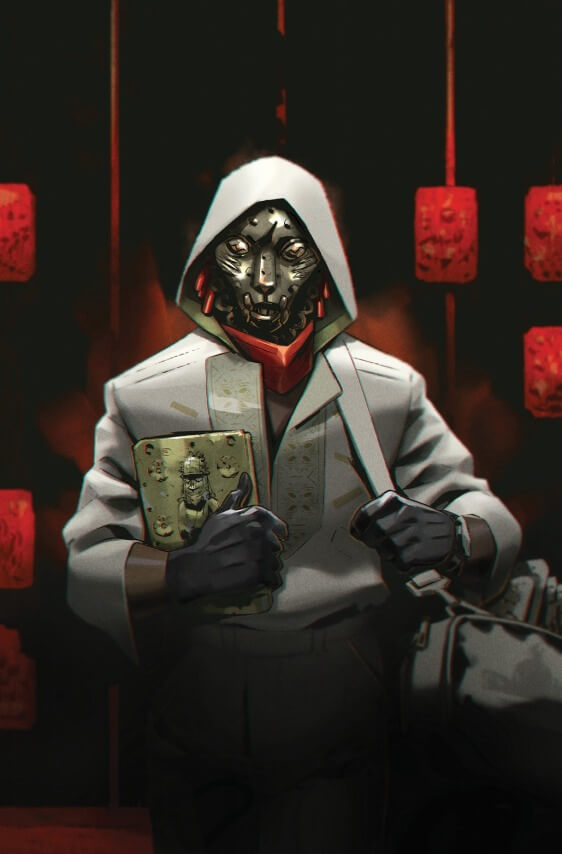
Reclaiming cultural artifacts from museums is a hot topic in comics right now. This January, Image Comics’ The Horizon Experiment ended with the Finders//Keepers one-shot, featuring an Indiana Jones/Lara Croft-type archaeologist who steals artifacts from museums and returns them to their original homes. That theme carries over to Bronze Faces #1 (Boom! Studios), in which three childhood friends hatch a plan to rob the British Museum when it debuts a work created by one of their fathers.
Writers Shobo and Shof are no strangers to heist narratives, but unlike their Afrofuturist sci-fi comic New Masters, Bronze Faces is set in our current times, allowing them to address the ways that colonialism has historically impacted West African cultures. Artist Alexandre Tefenkgi and colorist Lee Loughridge have worked together on multiple projects, including the Eisner Award-winning crime comic The Good Asian and post-apocalyptic Once Upon A Time At The End Of The World, and they have remarkable skill capturing a specific time and place while imbuing that detail with personality and energy. The creative team is rounded out by Eisner Award-winning letterer Hassan Otsmane-Elhaou, who turns words into dynamic visual elements that help give each title he works on a distinct identity.
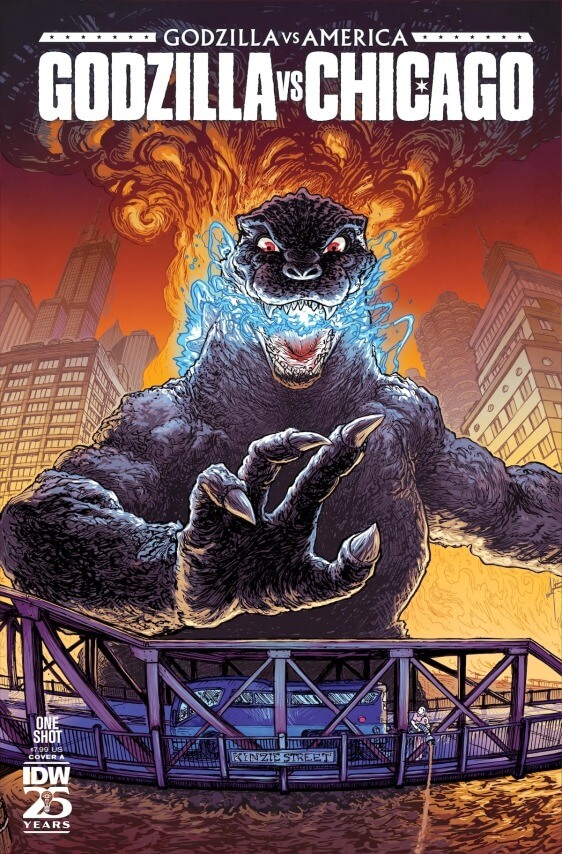
Godzilla is doing overtime in the world of comics this year, wrapping his fight with classic literary figures this month before taking on Marvel and DC superheroes and embarking on a tour of destruction across the U.S. Godzilla Vs. America: Chicago (IDW) features four short comics by an assortment of Chicago creators, including solo stories by Tim Seeley, Caroline Cash, and Ezra Claytan Daniels and a collaboration between writer Mike Costa and artist Ryan Browne. It’s a clever idea that gives local creators the opportunity to celebrate their cities through a fantastical lens, and this initial line-up offers a wide variety of styles to bring fresh perspectives to the pop culture icon. Browne’s cover references the notorious Dave Matthews Band bus incident, which should give you a good idea of the book’s sense of humor about Godzilla rampaging through the Windy City. And the next installment of the anthology series will help victims of real-world devastation: IDW recently announced that 100% of the profits from April’s Godzilla Vs. America: Los Angeles will go to the Book Industry Charitable Foundation, directly aiding bookstores and comic shops affected by the Los Angeles wildfires.
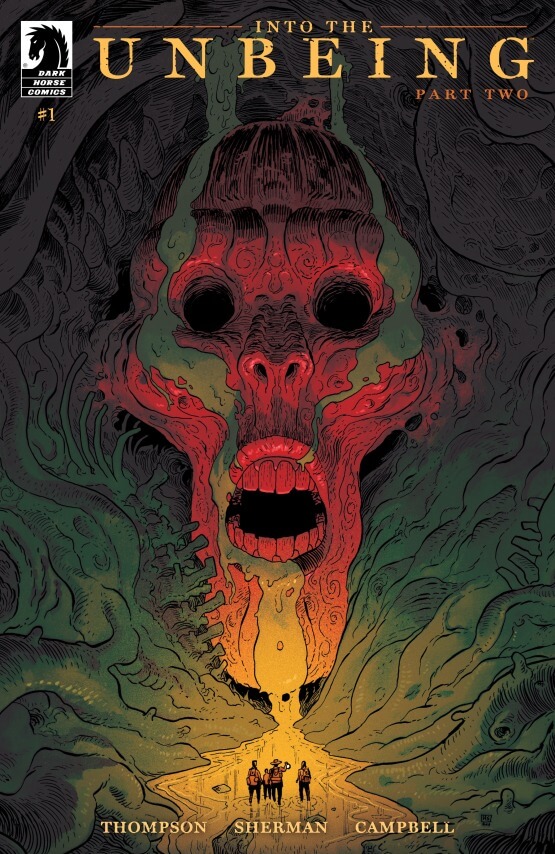
In February, artist Hayden Sherman will have three new books on stands. Absolute Wonder Woman and Batman: Dark Patterns showcase how Sherman invigorates established properties with unconventional page layouts and striking designs, but Into The Unbeing (Dark Horse Comics) is an even greater display of their talent, a creator-owned biohorror story that allows Sherman to push their imagination even further by handling both the linework and colors. Written by Zac Thompson with lettering by Jim Campbell, Into The Unbeing follows a group of researchers uncovering the secrets of a mysterious landform that is actually a gigantic body containing its own ecosystem of alien beings and deadly terrain.
The collected edition of Part One hits stands this week, and it’s a harrowing journey full of twists and turns, switching character perspectives with each chapter to give the chills a strong emotional foundation. Sherman does incredible work heightening the dread of Thompson’s script while creating an environment that has a strange, unsettling allure, inviting readers deeper and deeper into it to discover what fascinating new creations emerge from Sherman’s pen.
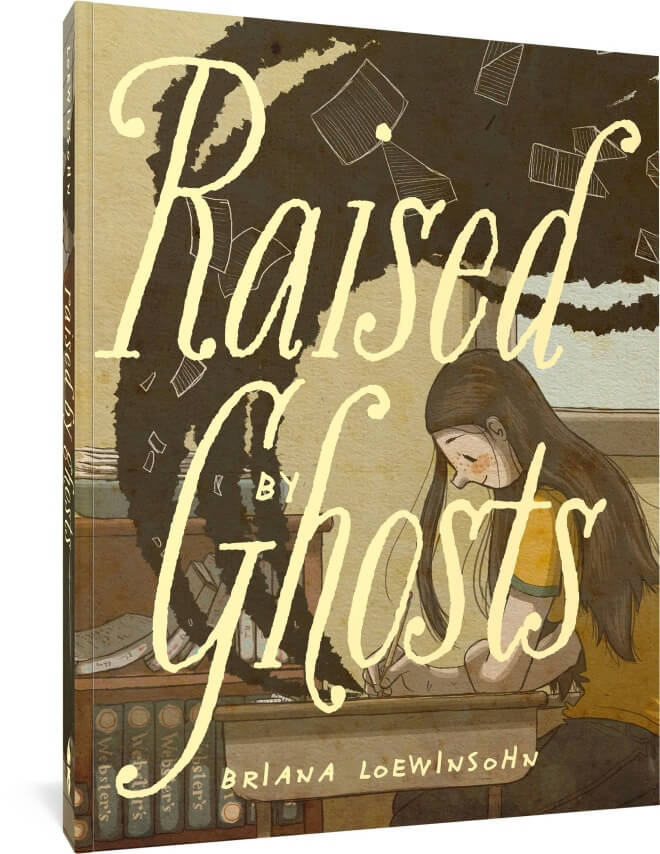
Briana Loewinsohn’s Ephemera was one of the best comics of 2023, a graphic memoir that explored the difficulties of growing up with her mentally ill mother with heartbreaking tenderness and lush natural imagery. Whereas that title featured an adult Briana looking back, her latest work, Raised By Ghosts (Fantagraphics), is a YA memoir set entirely during her adolescence, sending readers back in time to the early ’90s. Diary entries illuminate young Briana’s inner thoughts as she navigates new friendships at school and the challenges of living with divorced, neglectful parents, and as Briana becomes more isolated in her social life, the pages of her diary become a more prominent aspect of the visuals. One of the most intriguing aspects of the book is the way that the storytelling changes as young Briana starts developing her artistic voice, shifting away from the traditional structure and realistic imagery into more expressionistic territory. It emphasizes the way that art helps her process and work through her challenges at school and at home, finding comfort in the endless possibilities that exist on the blank page.
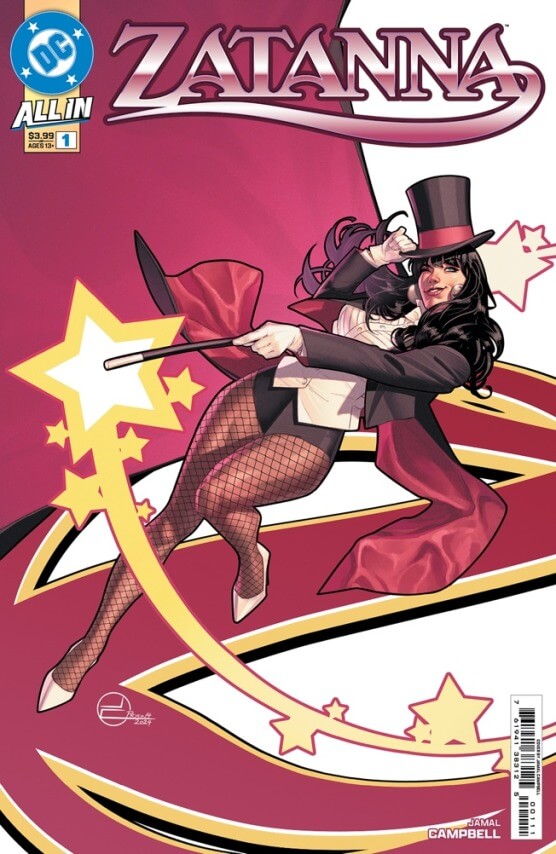
It’s a truly wonderful time to be a Zatanna fan. The backward-speaking magician superhero was the star of a prestigious miniseries in last year’s Zatanna: Bring Down The House by writer Mariko Tamaki and artist Javier Rodriguez (collected edition out on March 18), and she’s staying in the spotlight with a new six-issue miniseries written, drawn, and colored by Jamal Campbell with letters by Ariana Maher. Campbell’s artwork on books like Far Sector, Naomi, and Superman established him as one of the most innovative and versatile artists in superhero comics, and the Nightwing story he wrote for Batman: Urban Legends was a compelling, action-packed yarn exploring the intersection of superheroes and the entertainment industry. That makes Campbell an exceptional pick to tackle DC’s premier performer, who is tasked with saving her kidnapped stage crew from the clutches of a new villain, The Lady White. The preview art from Zatanna #1 (DC Comics) reveals how Campbell combines the heroine’s flashy theatricality and supernatural ability to create magic on the page, and the biggest selling point of the series is seeing what Campbell will do when he’s writing and drawing a longer story for the first time.
The post 5 new comics to read in February, including Godzilla’s U.S. tour appeared first on AV Club.
Valentine’s Day might be just around the corner, but we’re keeping our book recommendations a little more general this month. There are romance novels in our picks (Brynne Weaver’s Scythe And Sparrow is of particular note), but we’ve also got some exciting new books of cultural criticism in the mix, too. In addition to these selections, you’ll find a few more February books in our broader 2025 preview, including another romance novel and nonfiction titles about Better Call Saul and Lorne Michaels.
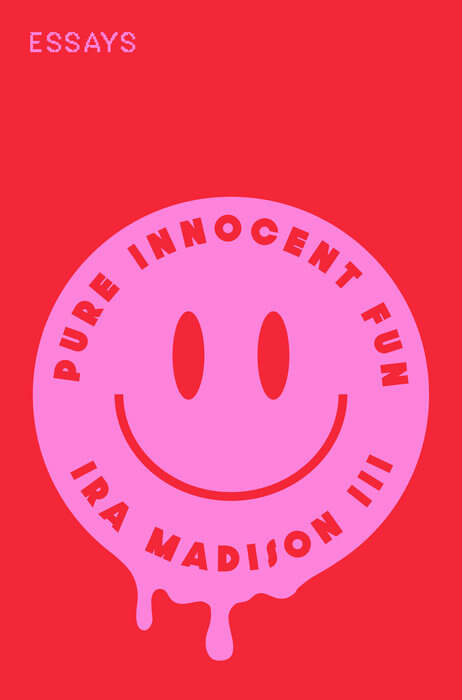
The title of Ira Madison III’s first book comes from a much-memed quote from NeNe Leakes on The Real Housewives Of Atlanta: “It’s unfortunate that people can change something that was just pure, innocent fun into drama.” It’s a fitting pedigree for a collection of essays from Madison, co-host of the Keep It! podcast and a longtime cultural critic at The Daily Beast, GQ, New York magazine, and more. In Pure, Innocent Fun, Madison examines the pop culture that shaped him throughout his youth as a gay Black man in Milwaukee and inspired his eventual, very successful career.
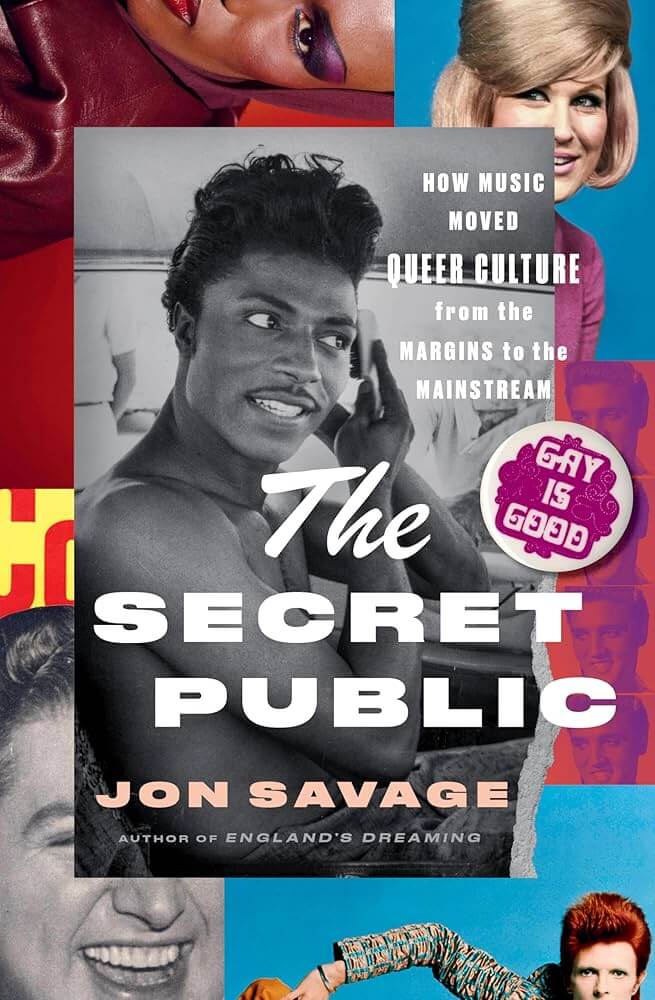
Jon Savage wrote the definitive text on punk music with his 1991 book England’s Dreaming and has parlayed that success into a career writing some of the most thoughtful music criticism of the past three decades. Savage continues that trend with The Secret Public, which examines the relationship between pop music and queer culture, beginning with Little Richard and ending with the death of disco. Queer themes were necessarily subtextual in early pop music, but Savage makes a compelling argument for their undeniable presence and influence throughout the 1950s, ’60s, and ’70s.

In 2022, acclaimed British-Pakistani writer Hanif Kureishi (Buddha Of Suburbia, My Beautiful Laundrette) experienced a devastating fall that left him paralyzed from the neck down. It didn’t stop him from writing, though: While in the hospital, he dictated his thoughts to his wife and sons, publishing a Substack newsletter about his experiences. Those hospital dispatches form the basis of Shattered, Kureishi’s new memoir that explores his fall, his recovery, and how he rebuilt his life in the aftermath.
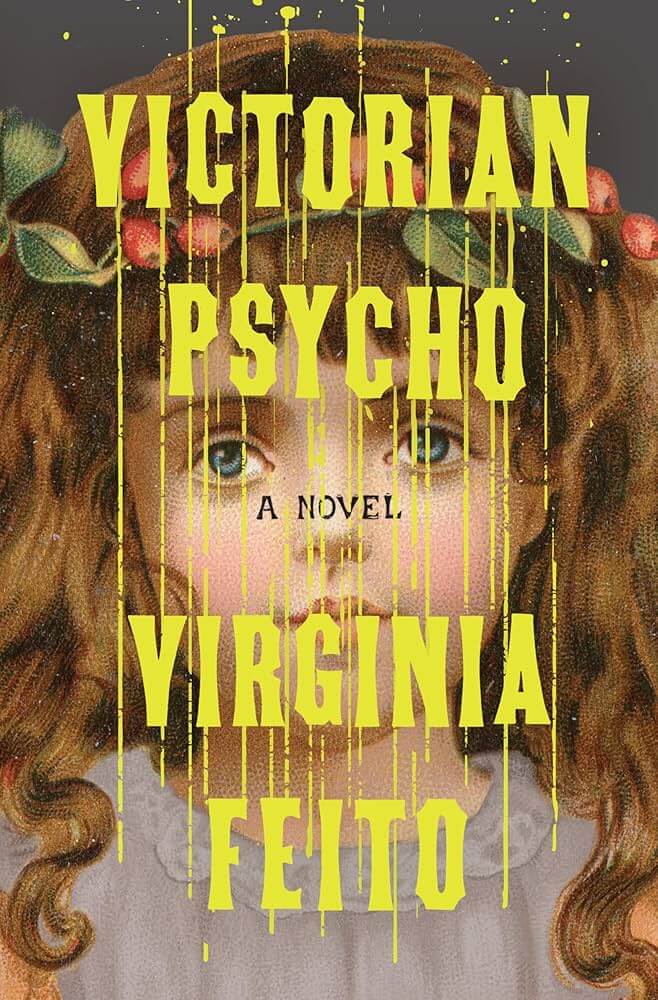
Virginia Feito burst onto the literary scene in 2021 with her debut novel Mrs. March, displaying an uncanny ability to convey a woman’s psychological unraveling. Her second novel, Victorian Psycho, pushes even further. It does exactly what it says on the tin: Winifred Notty lands a prime gig as the Pounds family’s new governess at their palatial estate in the English countryside. Too bad the parents are vile, the children are brats, and Winifred’s got a secret violent past that she’s not doing a very good job of repressing. A24 has already snatched up the film rights with Margaret Qualley set to star.

Iranian filmmaker Abbas Kiarostami won the Palme d’Or at the Cannes Film Festival for his 1997 film Taste Of Cherry. He died in 2016, leaving behind a legacy of highly acclaimed work. In Where Is Abbas Kiarostami? Toward A Postcolonial Film Philosophy, scholar Hamid Dabashi critically examines Kiarostami’s body of work as a whole, proposing a new way of understanding Kiarostami’s films—and film philosophy in general.
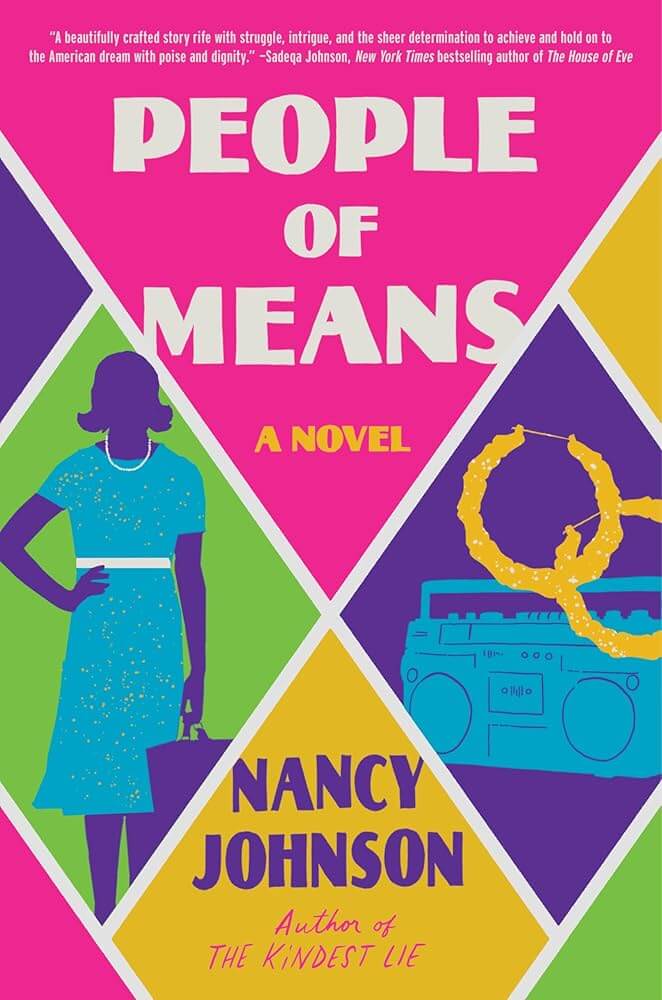
In her second novel, People Of Means, Nancy Johnson tells the intersecting stories of Freda, a Black woman attending Fisk University in 1959, and her daughter, Tulip, a rising public relations star in 1992 Chicago. Both Freda and Tulip face critical moments of social change: Freda with the Jim Crow South reaching a boiling point, and Tulip with the Rodney King verdict. They must each decide how to engage with the fight for equality—and what they’re willing to put on the line for it.

If you’re still mourning the loss of BookTok, Brynne Weaver’s latest book will probably only amplify your grief. Scythe And Sparrow is the final novel in the Ruinous Love trilogy; the first two, Butcher And Blackbird and Leather And Lark, were TikTok sensations as readers pored over the delicious, ludicrous premises and plot twists. In the final entry, doctor Fionn Kane is trying to start over in small-town Nebraska after his relationship in Boston falls apart. Rose Evans, a motorcycle stunt performer at a traveling circus, is just looking to let off some steam with a quick murder before getting the hell out of dodge, but she ends up with a broken leg instead. As Fionn nurses her back to health, the two become entangled in a dark romance.

In Nick Newman’s adult fiction debut (he writes children’s books under the name Nicholas Bowling), two sisters live in an isolated garden. They don’t know anything outside its walls; they have only ever known each other and the plants they tend. But when they find a boy hiding inside their sanctuary, they must confront the world outside for the first time.

We’ve only been catching up to the brilliance of Cristina Rivera Garza in the U.S. over the past few years, but she’s been a literary sensation in her native Mexico for decades. English translations of her past works are few and far between, but hopefully that will change soon, given that her 2023 memoir, Liliana’s Invincible Summer: A Sister’s Search For Justice, won the Pulitzer Prize for Memoir or Autobiography, bringing her international recognition. But even if her archives are slower to get translations, at least we’re getting her latest novel, Death Takes Me, in a timely manner. The book follows a professor—named Cristina Rivera Garza, in a meta twist—who discovers a man’s mutilated corpse and finds herself entangled in the police investigation of a serial killer obsessed with poetry.
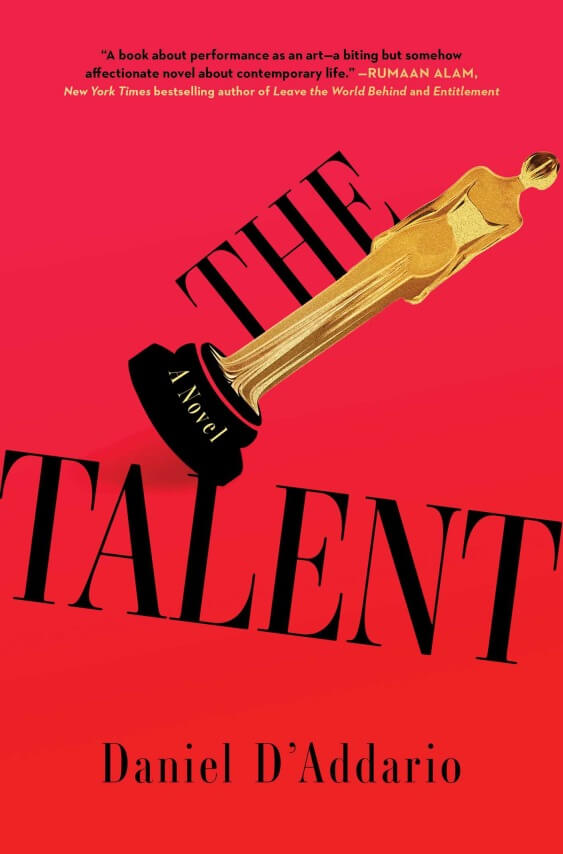
In his debut novel, Daniel D’Addario, a chief correspondent at Variety, takes aim at the industry he’s spent years covering. The Talent follows five actresses nominated for the biggest award of the year as they navigate their own professional ambitions while also reckoning with what they owe each other. The sudden spotlight from their nominations forces each of them to do some serious self-reflection, leading to uncomfortable revelations and existential questions about the nature of fame.
The post 10 new books to read in February appeared first on AV Club.
2025 is the year of Doom at Marvel Comics. With the masked dictator slated to make his MCU debut in next year’s Avengers: Doomsday film, the character is getting a huge comics push with One World Under Doom, a nine-issue crossover event that delivers exactly what the title promises: Dr. Doom taking over the planet. Written by current Fantastic Four scribe Ryan North with art by R.B. Silva and colorist David Curiel, One World Under Doom is a sprawling superhero blockbuster that showcases why Victor von Doom is such a compelling villain, playing a political game that helps him win over the public while the heroes try to take him down.
“As both a writer and a reader, I think what makes a good superhero crossover is a story that demands it, a story you couldn’t tell otherwise,” North tells The A.V. Club. “A story that, like One World Under Doom, changes the status quo. So this is something that is touching everything while it’s running and it’ll touch things after it runs by changing things.”
It’s a major vibe shift compared to North’s current Fantastic Four series, one of the shining stars in Marvel’s lineup thanks to its self-contained stories and tight focus on character relationships. “I was surprised that Fantastic Four was received as well as it was because I felt like what we were doing there is very different,” says North. “It’s not a big epic. It is basically an anthology of sci-fi short stories with these four to nine weirdos who have these fantastic powers and do things to help people.”
Over the last two years, North has revitalized Marvel’s First Family by exploring the depth of the relationships that already exist between these characters, who have decades of experiences together. “I ended up drawing a chart of every member of the Fantastic Four and drawing lines between them and wanting to hit every relationship,” North says. “We don’t often see what Reed and Johnny are like when they’re alone, or what Reed and Alicia are like when they’re alone. To explore those relationships has been really rewarding and makes them feel to me like real people. You have a different relationship with everyone in your group of friends, even though you’re all friends. You each have a relationship with each of those people.”
Doom has his own complicated relationships with the members of the Fantastic Four, and they will play a big part in his ascension. “One World Under Doom #2 begins with Doom approaching basically the only person whose opinion he cares about, which is his goddaughter, Valeria Richards, and him trying to explain to her what he’s doing, why he’s doing it, and trying to get her on board,” North tells us.
“That relationship between Doom and Valeria is maybe one of the best in comics. It’s so unusual and almost impossible. The idea that your hated villain would be the goddaughter to your child seems ridiculous, but it works because, Doom, for all of his many faults, he does have this weird, twisted sense of honor. I love that he will be Emperor Doom, but also still wants to be Uncle Doom to this young woman. They’re both pulling each other in different directions, kind of towards each other. It’s so operatic and big, but it makes sense emotionally.”
Justifying Doom’s takeover is a top priority for North, who understands that Doom is an expert politician well-versed in the art of manipulation. “You want to understand where Doom is coming from, what he’s trying to accomplish,” says North. “He wants to show that he’s the best of us, and he wants to show that if he’s in charge of everything in the world things will be better, which is at once quixotic, but also very Doom-like. If anyone on Earth believes they can control everything and make it better, it’s Victor von Doom.”
“[Doom] is so deliberate and considered in everything he says. As a writer, it’s this great excuse to pull out your best material, because normal people talk like normal people. They’re not always composing their words with much thought. Doom is always composing his words with a lot of thought, and so he always gets to sound great in everything he says. As a writer that’s fun, you get to write for Doom and make him be the best possible version of himself at all times, 100%.”
One World Under Doom features the usual Doom opponents like the Fantastic Four and Avengers, but it also includes a surprising group of heroes with their own Doom history: the cast of The Unbeatable Squirrel Girl. Ryan North, Erica Henderson, and Rico Renzi’s Eisner Award-winning series turned Doreen Green into an all-ages comic superstar, and that series has cast a long shadow on North’s Marvel work. “Squirrel Girl helped a lot in figuring out how to write Fantastic Four, because she had actual computer science and then comic-book science,” North notes. “And with FF, a lot of it has been actual science heightened by comic-book stuff on top of that.”
“In the Doom story, I wanted her there because there’s some really cool stuff she could do in relation to Doom. It grounds the story in an interesting way. Doreen’s a very smart young woman, and she doesn’t fall for the normal baloney of let’s punch first and ask questions later. I feel like when she’s around, things seem more real, even though she is this heightened young woman with squirrel powers. It helped for me to sell that this was a big event touching everything in the Marvel Universe because it’s even impacting what Squirrel Girl is doing. Things have gotten real when Doreen Green is involved.”
North has an exceptional collaborator in artist R.B. Silva, whose work on Powers Of X and Rise Of The Powers Of X shows that he can capture the massive scope of a superhero epic starring tons of characters. “It was very early on when we had [R.B.] come on for this and for me it always helps when you know who your artist is going to be, because then you can talk to them and find out what they like, what they don’t like, and all that stuff,” says North. “I’m always imagining the page in my head when I’m writing, and for me the greatest joy of comics is when you get those pages back from an artist, and they’re better than what you imagined. R.B. has such insane talent that every time I get a page from him it’s just wow! That looks so great. I’m afraid I’m gonna have to cover some of this art with my words, and I apologize for that.”
One World Under Doom debuts on February 12, and it brings a slew of tie-ins along with it, including a new Thunderbolts team book and solo titles for Red Hulk and Doctor Strange, who relocates to Asgard as Doom fills the role of Sorcerer Supreme on Earth. While the Fantastic Four are dealing with Emperor Doom in their main series, North also gets the opportunity to pit them against an equally devastating threat in Godzilla Vs. Fantastic, which teams him with legendary superhero artist John Romita Jr. for the first in a series of Godzilla Vs. one-shots. 2025 looks to be a great year for Fantastic Four fans, and One World Under Doom pushes the heroes to the forefront of Marvel Comics just in time for their MCU debut over the summer. Check a four-page preview from the comic below.


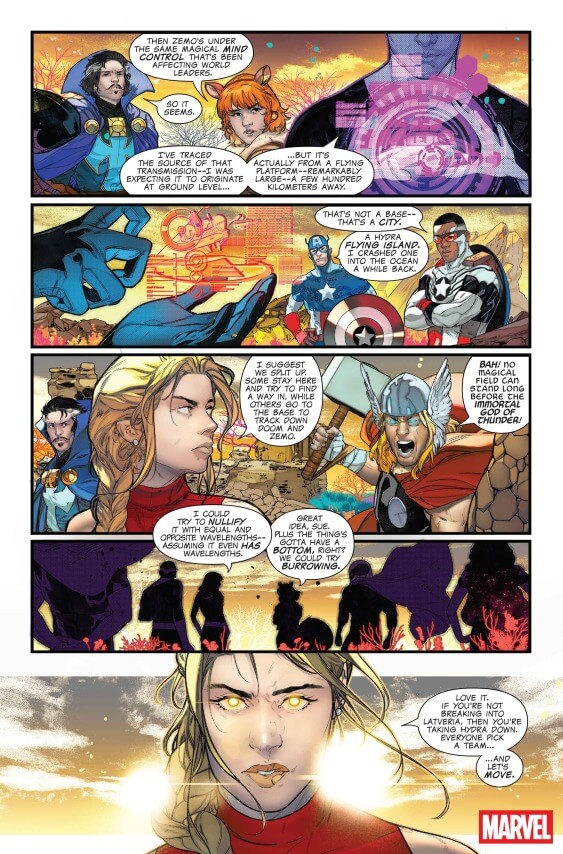
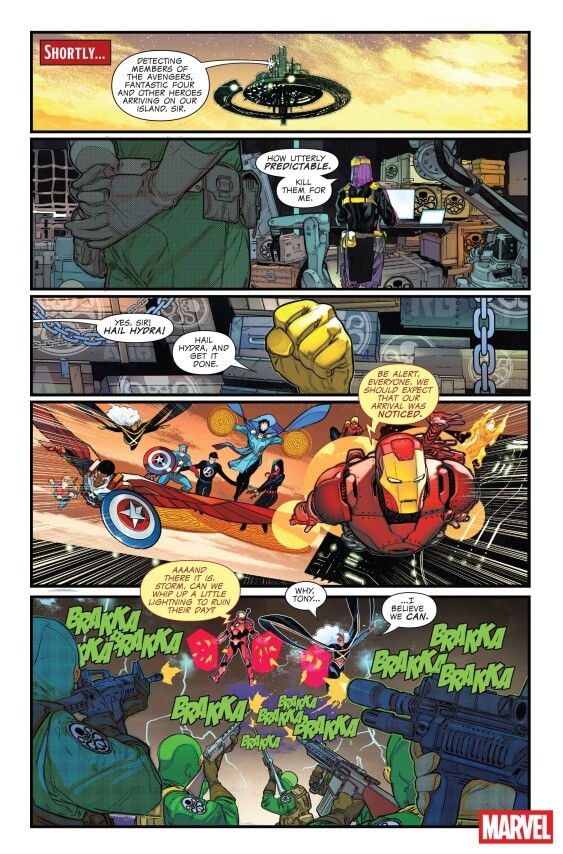
The post Ryan North ushers in a new age of Victor von Doom at Marvel Comics appeared first on AV Club.
